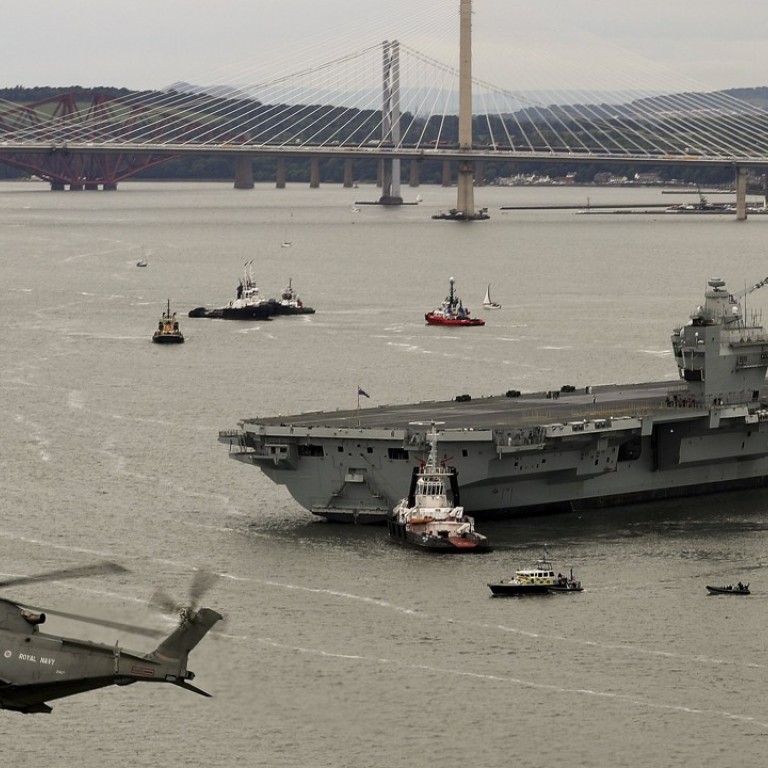
UK’s new aircraft carrier uses Windows XP and could be vulnerable to cyber-attack
Britain’s new aircraft carrier HMS Queen Elizabeth, which has left the Rosyth dockyard, could be vulnerable to a cyber-attack as it appears to be using the outdated Windows XP operating system.
But officers aboard the otherwise cutting-edge £3.5billion (US$4.45billion) carrier, which is the biggest and most powerful vessel ever built for the Royal Navy, insist that they are well prepared to defend against such attacks and will have a team of cyber specialists on board.
During a tour of the carrier, screens were spotted using what appeared to be the outdated 2001 Windows XP. That Microsoft OS was targeted by the WannaCry ransomware attack in May that disrupted parts of the National Health Service and other companies worldwide. Parliament came under cyber-attack on Friday with the accounts of about 90 MPs hacked.
Questions have also been raised about the vulnerability of the UK’s new Trident nuclear submarine system, though the Ministry of Defence insists that submarines are isolated when at sea.

He added: “We are a very sanitised procurement train. I would say compared to the NHS buying computers off the shelf, I would think we are probably better than that. If you think more Nasa and less NHS you are probably in the right place. If the Chinese want to flood the market with a particular widget and they put £30 million into it, one will eventually get through to the defence procurement chain. We have got people looking at stuff like this all the time.

Lieutenant Commander Nick Leeson, senior warfare officer, said the carrier would have a capability for defending against hacking, including a team of cyber specialists.
On Monday naval staff and contractors lined the deck of the ship as it departed from Rosyth in a three-hour operation.
The ship, which will be the UK’s future flagship, and its 700-strong ship’s company are heading to the North Sea for maiden sea trials over the summer. One of the most delicate manoeuvres of the six-week trials has already been completed – just moving the ship from the dock. Navigators, pilots and tugboats had the slimmest of margins to deal with to guide HMS Queen Elizabeth out of the Rosyth basin in Fife where it was assembled.
At high tide, the ship was taken through a narrow gate avoiding the dock walls by centimetres while under the waterline there was just half a metre between the bottom of the ship and the seabed. Once travelling just a few hundred metres in the Forth, the carrier dropped anchor in order to wait for the tide to lower, allowing space to pass under the Firth’s bridges.
A total of 10,000 people worked on construction of the ship, made up in sections at yards around the UK and transported to Rosyth, where it was assembled.
R Adm Keith Blount, head of the Navy’s carrier programme, said: “This ship has been built in a very unique way: assembled in Rosyth but built around the UK in six different yards. This is the moment where that British shipbuilding expertise meets the professionalism of the Royal Navy to give us a ship to be proud of.”
The second ship in the class, HMS Prince of Wales, is being fitted out in the Rosyth dock and staff were able to look on as the Queen Elizabeth set sail for the first time.

